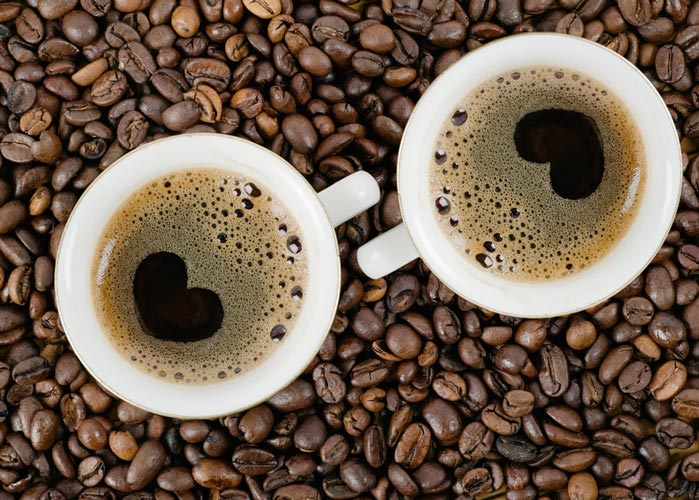
Heart disease is the leading cause of death in the United States, so we all need to do what we can to help ensure the best possible heart health. The experts say that staying active, knowing about any genetic risk factors you might have, and eating a healthy diet can all help decrease your risk of developing heart disease. Let's take a look at some things that you might have thought you needed to cut out of your diet but are actually surprisingly heart healthy.
Avocados Are Heart Healthy
Because avocados are high in fat, many people who are interested in eating heart-healthy foods tend to avoid them. But the type of fat they contain, monounsaturated, is good for the cardiovascular system. It helps increase a person's good cholesterol levels and decrease the bad. Avocados may also help keep your eyes and memory healthy. Try a tuna-stuffed avocado for a heart-healthy snack or meal.
Another good way to get avocado into your diet is to have some avocado toast daily. Use a sprouted grain bread to make toast and smash 1/2 an avocado to place on top. Eat it plain or add lemon or lime juice and a bit of garlic, if you like, for a quick but powerful, heart-healthy breakfast.
Chocolate Can Help Your Heart
Flavonoids, which are compounds that help protect plants from disease and toxins, can also have health benefits for humans who ingest them, and chocolate is filled with great flavonoids. They act as antioxidants, helping to fight free radical damage in the body. Free radicals are formed secondary to normal bodily functions, but they can also be increased by toxins in the air and other foods. Studies have shown that ingesting dark chocolate can decrease blood pressure, improve blood flow in the heart, and decrease the risk of stroke and heart disease.
However, in order to get the greatest benefit from eating chocolate, you'll need to know a few things. Chocolate is made from cacao seeds, which are bitter. During the production of chocolate, the seeds are fermented to remove some of their bitter quality. Then they're cleaned and roasted, the shells are removed, and they're ground up. The ground cacao seeds can then be heated up to form a liquid, and when it is cooled back down, it separates into two substances: cocoa butter and cocoa solids. In the early 1800s, a new processing procedure for chocolate was invented: the Dutch method. Part of that method involves adding alkaline salts to the chocolate to further reduce its bitter flavor.
The sweetened chocolate that most people eat today contains different proportions of cocoa butter, cocoa solids, sugar or another sweetener, and sometimes milk. The darker the chocolate, in general, the higher the content of cocoa solids, which is where the flavonoids are. This is why the recommendation has long been to eat dark or extra dark chocolate for the most heart health benefit.
However, that might not be all there is to the chocolate flavonoid story. Studies have shown that fermentation, roasting, and Dutch processing all decrease the flavonoid content of chocolate. However, if any of these processing stages is shortened, the result is a more bitter taste to the chocolate.
For greatest heart health benefits, the less processing the cacao bean has undergone, the better, and the less sugar and milk added to the product, the better. It might be difficult to find information on how a particular chocolate was processed, however, but the industry as a whole will hopefully be making strides toward balancing chocolate's flavonoid content and resultant health benefits with its taste.
In the meantime, for the greatest heart health benefits, choose the darkest chocolate you can without added sugar and other flavorings. We like this stevia-sweetened product: Lily's Sweets Extra Dark Chocolate.
Coffee Could Be Good for Your Heart
Whether or not coffee is good for your heart has been a controversial issue over the years. However, recent studies are indicating a link between daily coffee drinking and reduced risk of heart disease and stroke. The powerful antioxidants in coffee are probably the reason for this positive link.
If you're not already a coffee drinker, consider adding tea to your daily diet. Green, oolong, and black varieties all have lots of antioxidants that can help keep your heart healthy.
Wine Can Be Heart Protective
Red wine contains resveratrol, a powerful polyphenol that is found in the skin of the purple grapes used to make it. Resveratrol's antioxidant and anti-inflammatory properties have been linked with the ability to decrease a person's risk of heart disease. Learn more here: "Resveratrol for a Healthy Heart."
Additionally, other alcohol, like beer and liquor, can have heart health benefits for some people by helping to keep the blood thin and raising HDL, the "good," heart protective kind of cholesterol. However, this appears to only be true for some people, and when alcohol is used more than moderately, it can raise your blood pressure and damage your heart.
Champagne is made from red or white grapes that contain polyphenols, much like wine, and probably has similar benefits for your heart, especially the type made from red grapes.
Beer also contains antioxidants related to flavonoids, but they are from the barley and hops used to make beer and are different from the flavonoids in the grapes used to make wine. Beer is high in protein and B vitamins, as well.
If you do drink alcohol, one drink per day for women and two for men is the recommended amount by most experts. One drink is 12 ounces of beer, 5 ounces of wine, or 1.5 ounces of liquor. If you don't drink already, adding alcohol to your diet might not be a good idea. But you could consider trying some non-alcoholic red wine. A recent small study indicates that it might be as good or better at lowering blood pressure as the alcoholic variety (Gemma Chiva-Blanch, 2012).
Remember, it's important to develop an overall heart-healthy lifestyle that includes exercise and a healthy diet. Include the above foods only in moderation within such a plan to add value to it.
Works Cited
- Gemma Chiva-Blanch, M. U.-S.-M.-R.-L. (2012, Sept. 27). Dealcoholized Red Wine Decreases Systolic and Diastolic Blood Pressure and Increases Plasma Nitric Oxide. Retrieved from ahajournals.org: DOI: 10.1161/CIRCRESAHA.112.275636.
- W Jeffrey Hurst, S. H. (2011, Sept. 14). Impact of fermentation, drying, roasting and Dutch processing on flavan-3-ol stereochemistry in cacao beans and cocoa ingredients. Retrieved from springeropen.com: DOI: 10.1186/1752-153X-5-53.




